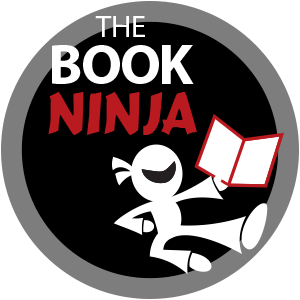Wikipedia describes the functions of the ninja as espionage, sabotage, assassination, infiltration, and guerrilla warfare. To publish like a “ninja” means adding the same skillful techniques to your repertoire of success methods as an aspiring author. If you want to be successful in getting your book(s) published—be it traditionally or independently—you must educate yourself about the publishing industry and learn the tricks of the trade.
Learn the ninja art of espionage. That means doing your investigative work and “spying” out the pros and cons of the different types of publishing.
- Traditional publishing, also called trade publishing, encompasses the five major publishing houses, known as the “Big 5”: Hachette Book Group, HarperCollins, Macmillan, Penguin Random House, and Simon and Schuster. Additionally, there are hundreds of smaller publishing companies and their imprints, such as Baker House, Bantam Books, Harlequin, Prentice Hall, and Vintage Books, to name but a few.
In traditional publishing, authors submit their manuscripts directly or through an agent and then wait through a review process (and usually multiple rejections). If the manuscript is accepted, a contract will be signed. The publisher takes care of cover design, editing, distribution and sales, marketing, and payment of royalties to the author.
- Self-publishing services is comprised of publishing houses in which authors pay them to publish their books. They generally offer little or no editing, cover design, or marketing; although some vanity publishers will offer these services at a steep price. A few examples are Xlibris, LLC, Westbow Press, Lulu, and Abbott Press.
- Indie-publishing or self-publishing has become commonplace as more and more authors are determined to maintain control of the whole publishing process, thereby retaining all their rights and profits. Self-publishing requires knowledge and effort, but the rewards can be great!
Becoming your own publisher begins with choosing a name, getting an ISBN to list your book, registering your book with the library of Congress, hiring out for cover design, interior book layout, and editing. It involves finding a printer, deciding how you want your books distributed, and becoming savvy about marketing.
Each of these publishing routes has pros and cons…
With traditional publishing there are little or no upfront costs. You get a team of experts to handle the design, polishing, distribution and marketing of your book. You get recognition and credibility as an author. Opportunities for literary contests and prizes are greater. And let’s not forget a nice advance, although it might only amount to a $1,000, or perhaps more, depending on a variety of factors.
The downside to traditional publishing is that it’s an extremely slow process. It typically takes around three years to sign an agent, have the agent sell your book to a publisher, and have the publisher actually produce it. The fastest a traditional book can get published is approximately 18 months. That’s really fast for traditional.
Traditional publishing mean less control over your work. After the contract is signed, the book belongs to the publisher. Royalties are low, amounting to a mere dollar or two per book sold. A publisher can take your book out of print when sales or interest slows down.
Self-publishing services (or what used to be called “vanity presses”) have gotten a bad rap for several reasons. First off, it will cost you big bucks. If you’re going to go with a fully-customized book, especially if you’re plan to get it edited, then you are going to be paying anywhere from $5,000 to $30,000. They mark the price of your book up and then take 65% of your profits to go into their pockets. Authors going through a vanity publisher never make back the cost of having their books published in this way.
So why do people use them? Because of the appeal of getting one’s book out on the market somewhat quickly and not having to worry about the details of self-publishing or the cumbersomeness of traditional publishing. Plus, their book is published under a recognizable publishing house name, which they believe gives them some credibility. But frankly, I think it’s because people don’t do their due diligence in “ninja publishing espionage.”
To be fair, there are some reputable self-publishing services around; BookBaby is among them; however, it’s still more expensive to use a publishing service than it is to learn the basics and do most of the work yourself. A detailed review of self-publishing services is available on the ALLi website (Alliance of Independent Authors).
With a little extra effort to research and learn, and a little more confidence in one’s abilities to navigate the publishing world, writers can do very well for themselves as indie authors. Having spent years in the publishing industry, I believe self-publishing (indie publishing) is the best route for most—not all—authors to take. Why? Among other things;
- YOU make all the decisions yourself. ALL the decisions. You decide on editing, cover design, formats, illustrations, etc.!
- YOU do all the work yourself or hire a team to do it for you.!
- YOU make all the money from book sales and don’t share with anyone else.!
- YOU publish your own books under your own brand!
Do your homework. Be an investigator and you’ll start on the path of successful ninja publishing!

